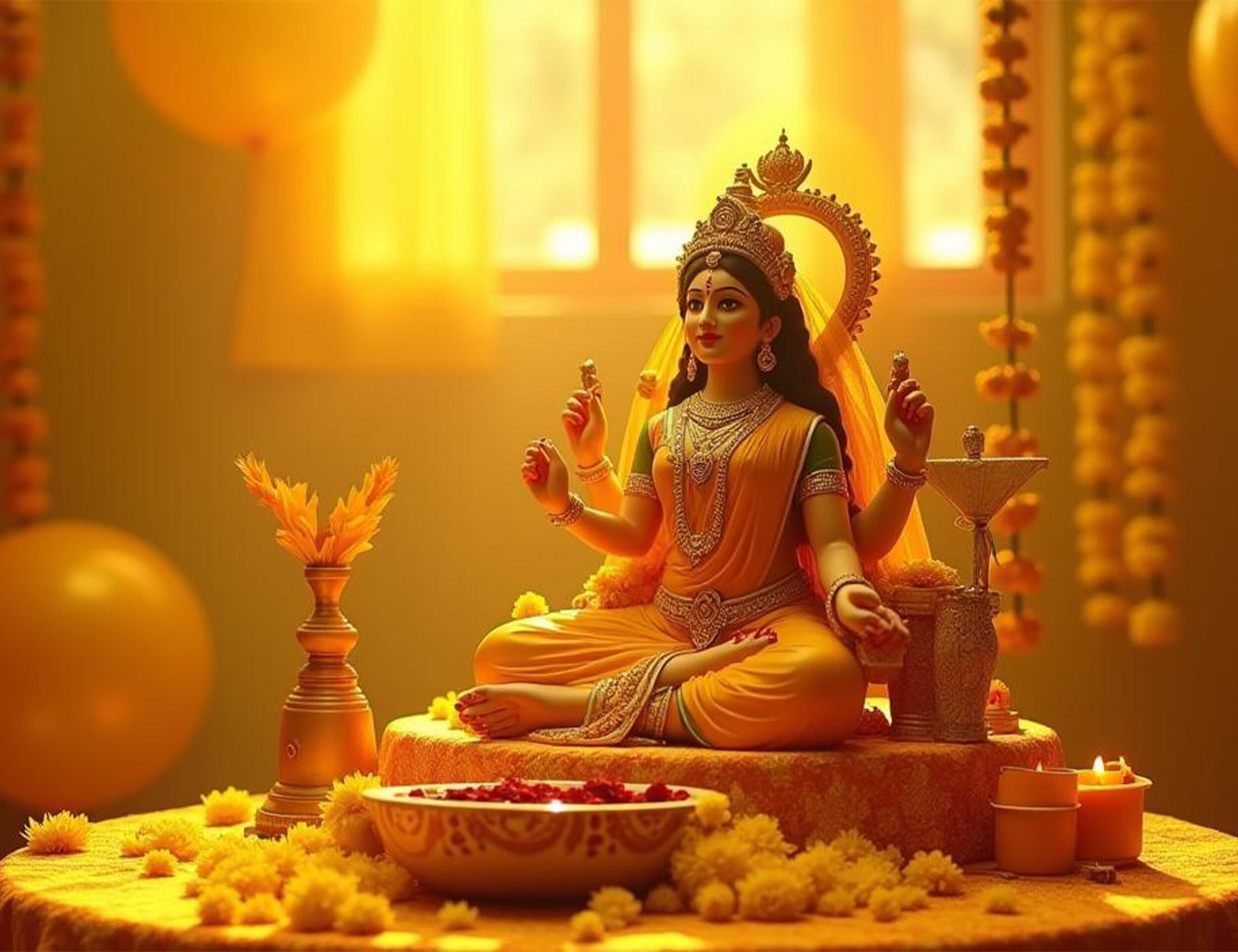STORIES BY DIWAS

Lifestyle
Fascinating Reasons Why Basant Panchami is a Harvest Festival
Date 1 February 2025 Reading time: 7-10 mins
Why Basant Panchami is Celebrated as a Harvest Festival in India
As winter melts into spring, there's a festive stir in the air. Across the Indian countryside, lush mustard fields paint the landscape a vivid yellow. This is the season of Basant Panchami, a festival that's not just a religious occasion but also a celebration of the upcoming harvest. But is Basant Panchami a harvest festival? Let's delve deeper.
Introduction to Basant Panchami
Basant Panchami falls on the vibrant fifth day of the Indian lunar month of Magha, typically gracing the calendar in late January or early February. This electrifying festival is dedicated to Goddess Saraswati, the revered Hindu goddess of knowledge, music, and the arts—an occasion that promises divine blessings for wisdom and creativity.
On this day, people across India don their brightest yellow attire, their hearts brimming with devotion as they offer prayers to the goddess, all while indulging in an array of delicious, festive delicacies that tantalise the senses.
But Basant Panchami is far more than just a religious celebration—it's a dazzling tribute to India's rich agricultural heritage. It marks the grand finale of winter's cold embrace and the magnificent arrival of spring, a season when the earth shakes off its slumber and bursts into life. New crops push through the soil, promising a fresh harvest. Basant Panchami is a harvest festival that joyously commemorates this awe-inspiring seasonal transition, celebrating the promise of abundance and renewal.
Why is Basant Panchami Celebrated?
Basant Panchami is a festival brimming with layers of meaning, each more powerful and profound than the last. On a spiritual level, it’s a sacred, almost magical day devoted to the worship of Saraswati, the supreme goddess of knowledge, music, and the arts. This is the day when students and artists alike offer their most treasured possessions—books and musical instruments—before her divine idol, fervently praying for a surge of wisdom, creativity, and the brilliance that will light up the year ahead.
It’s a day of both deep reverence and wild hope, as aspirants seek the goddess's blessing to unlock their highest potential.
But Basant Panchami is far from just a spiritual festival—it is a grand, life-affirming celebration deeply entwined with the pulse of India’s agricultural heartbeat. The festival signals the triumphant arrival of spring, a season when the earth shatters the last remnants of winter’s chill and bursts forth with boundless energy.
For farmers, it’s a moment of immense anticipation—Basant Panchami is a harvest festival marking the glorious culmination of months of hard work. The rabi crops, sown with hope and patience in the cold embrace of winter, are now ready for their grand unveiling.
The fields come alive, painted in a riot of yellow as mustard flowers bloom in full splendour—a dazzling, radiant symbol of prosperity, abundance, and the promise of a fruitful future.
The Significance of Basant Panchami as a Harvest Festival
In agrarian communities, Basant Panchami is a harvest festival—a time to pour out heartfelt gratitude for the abundance of the harvest and fervently pray for a prosperous agricultural year ahead. It’s a celebration of life itself, where farmers, with hands still weathered by the toil of the fields, offer the first golden mustard flowers to the gods, invoking blessings for a bountiful future. With joy and reverence, they honour the fruits of their labour, knowing that this moment is the culmination of months of dedication and hard work.
The festival holds particular significance in northern India, where wheat is not just a crop but the very foundation of daily life. For these farmers, Basant Panchami is a harvest festival that marks the grand beginning of the wheat harvesting season. The fields that once shimmered with the golden hues of mustard now stand ready, brimming with the promise of new life and nourishment.
In the rural heartlands, the celebrations are nothing short of a spectacle. People take to the skies, flying colourful kites that dance and flutter in the air, as if echoing the very spirit of joy and freedom that the harvest season brings. This age-old tradition symbolises not only the harvest itself but the unbridled happiness that comes from a season of abundance and renewal.
How is Basant Panchami Celebrated as a Harvest Festival in India?
Basant Panchami celebrations are deeply rooted in agriculture, reflecting gratitude for the harvest and hopes for a prosperous season ahead. Let's see how:
The Role of Agriculture in Basant Panchami Celebrations
Agriculture plays a central role in Basant Panchami as a harvest festival. In Punjab, for instance, farmers dress up in colourful kurtas and pajamas and perform folk dances in the mustard fields. They also decorate their cattle with garlands and paint their horns, acknowledging the animal's role in the harvest.
In West Bengal, the festival is associated with the blooming of yellow palash flowers, which are offered to the gods. Women wear yellow sarees and participate in cultural programs that celebrate the arrival of spring and the upcoming harvest.
Traditional Foods and Dishes Associated with Basant Panchami
No Indian festival is complete without its special delicacies, and since Basant Panchami is a harvest festival that is no exception. The festival is synonymous with kesar halwa, a sweet dish made with flour, ghee, sugar, and saffron. In Bengal, people prepare a special rice dish called basanti pulao, flavoured with turmeric and nuts.
Other popular dishes include meethe chawal (sweet rice), boondi ke ladoo, and kesari sheera. These yellow-hued dishes not only symbolise the vibrancy of spring but are also made with ingredients from the fresh harvest.
Cultural Significance of Basant Panchami in Different Regions of India
Basant Panchami Celebrations in Punjab
In Punjab, Basant Panchami is a harvest festival celebrated with great enthusiasm. People wear yellow kurtas and pajamas and turbans, and the streets are filled with the sounds of dholak and giddha. Kite flying is an integral part of the celebrations, with the sky dotted with colourful kites of all shapes and sizes.
The festival also has a special significance for the Sikh community. On this day, Sikhs visit gurudwaras and listen to kirtans. The Nishan Sahib, the Sikh flag, is also changed on Basant Panchami.
Basant Panchami Celebrations in West Bengal
In West Bengal, Basant Panchami is a harvest festival and is celebrated as Saraswati Puja. People clean their homes and decorate them with yellow flowers. Students place their books before the goddess's idol and seek her blessings.
The day is also marked by cultural programs in schools and colleges, where students showcase their talents in music, dance, and poetry. Women dress up in yellow sarees and participate in the festivities.
Basant Panchami Celebrations in Bihar
In Bihar, Basant Panchami is a harvest festival celebrated with great fervour. People wear yellow clothes and offer prayers to Saraswati. The festival is especially significant for students, who seek the goddess's blessings for a successful academic year.
On this day, people also eat khichdi, a dish made with rice and lentils. The dish is believed to bring good luck and prosperity.
The Importance of Basant Panchami as a Harvest Festival
Basant Panchami is a harvest festival that beautifully blends religious, cultural, and agricultural traditions. It's a celebration of the changing seasons, the bounty of the harvest, and the hope for a prosperous future.
As you celebrate this vibrant festival, don't forget to embrace its spirit of renewal and gratitude. Dress up in your favourite yellow kurta from Diwas, or check out our festive Basant Panchami collection. Enjoy the special delicacies of the festival and soak in the joyous atmosphere.
Happy Basant Panchami!


